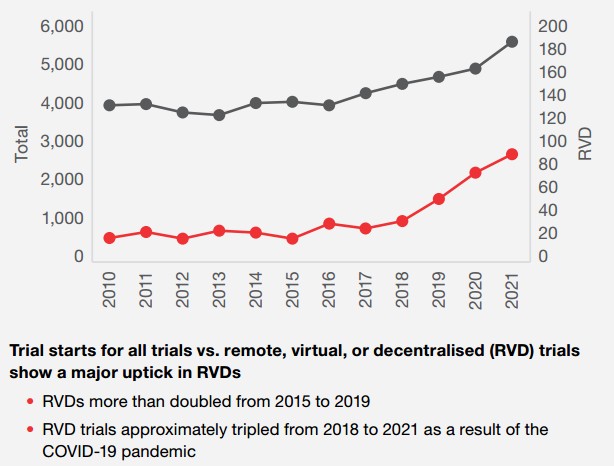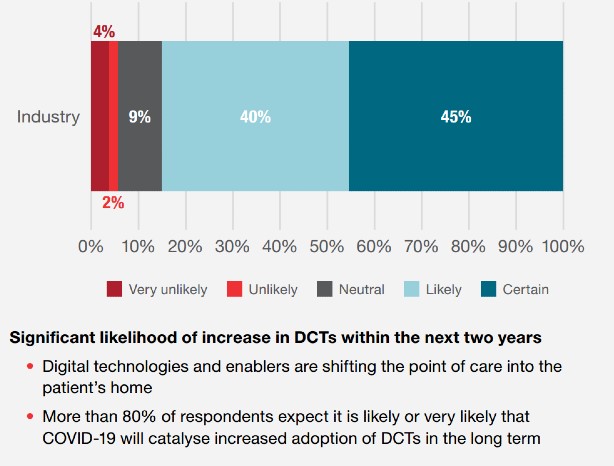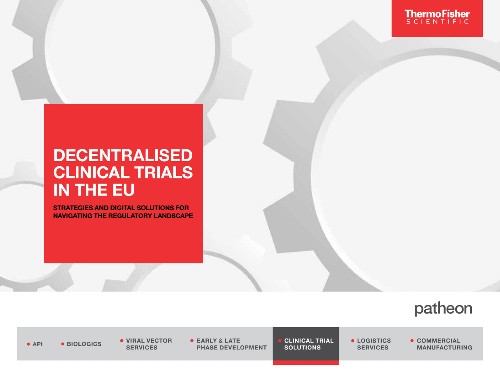EBOOK
Decentralised Clinical Trial: 5 Digital Strategies for better DCTs

Decentralised Clinical Trials have a wide-range of benefits to both patients and to the biopharma companies who run them.
A recent survey revealed that:
Digital technologies and remote monitoring applications enable DCTs by making it possible to document and uphold typical trial monitoring activities while also maintaining the rigour required by regulatory bodies.
They have the added benefit of often being more patient-friendly, faster, and even less expensive than traditional procedures. Although not all of these technologies may be available in all EU countries, some form or adaptation of them will likely be acceptable in most study locations.
This video summarises the five key digital strategies for innovative, regulatory-friendly and data-savvy Decentralised Clinical Trials.
Download the full ebook by filling out the short form
What is a decentralised clinical trial?
Decentralised Clinical Trials (DCTs) can take a variety of forms depending on patients’ needs, study protocol, drug company preferences, or regulatory requirements.
Trials may be remote and decentralised from start to finish—with no physical contact between participants and investigators—or they may rely on hybrid designs that incorporate only certain elements of decentralisation (e.g., direct-to-patient investigational medicinal product (IMP) distribution and remote collection of routine blood tests).
Although many US-based pharmaceutical companies have been employing some features of DCTs for years, the COVID-19 pandemic demonstrated the potential of fully remote recruitment, study administration, and data collection. Truly decentralised studies became more than a pipe dream, cementing the utility and benefit of some of these approaches in the clinical trial repertoire.
Characteristics that are common to most DCTs include:
- Flexible locations with geographically distributed mini-hubs, or non-site-centric study schedules
- Reduced travel burden for patients via decreased or total elimination of site-based visits, to increase convenience for participants and their families
- Digital/remote monitoring capabilities and virtual data reporting options
- Telehealth – virtual visits or other remote visit and participant communication strategies
- Distribution of IMP, often directly to patient homes or via pharmacies nearer to patients
- Extended vendor networks for laboratory testing, home nursing, data management, and other study elements, to make visits and study requirements less burdensome for participants
Benefits of Decentralised Clinical Trials

Some of the top benefits reported by sponsors that have completed DCTs include:
- Faster and simpler patient recruitment especially for rare diseases, since patient location, distance to study site, and qualified site location become less important
- Increased participant adherence and retention due to improved communication, greater patient convenience, and enhanced monitoring
- Faster speed to trial completion. Reduction in travel-, site- and time-related budget overruns
Collectively, these benefits can translate to a significant return on investment.
New data from the Tufts Center for the Study of Drug Development indicate
that DCTs deliver a higher expected net present value (eNPV) than traditional
trials.
The eNPV metric integrates trial cycle time, cost, revenue, and risk into
a summary measure. Based on an analysis of more than 150 DCTs, the eNPV
reported in this study translates to an approximately $10 million return on a
$2 million investment for phase 2 trials and an estimated $39 million return
on a $3 million investment for phase 3 studies.

Download the full 20 page ebook for more information about how to run better decentralised clinical trials, courtesy of Thermo Fisher Scientific
Download the full ebook
Decentralised Clinical Trials in the European Union

